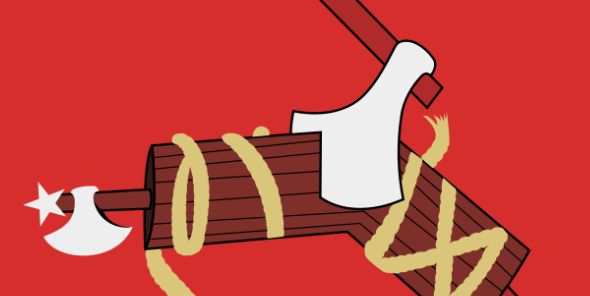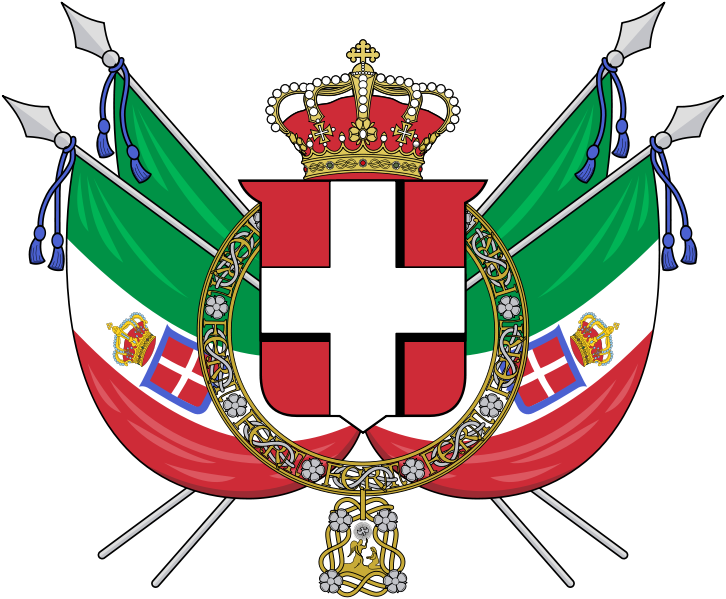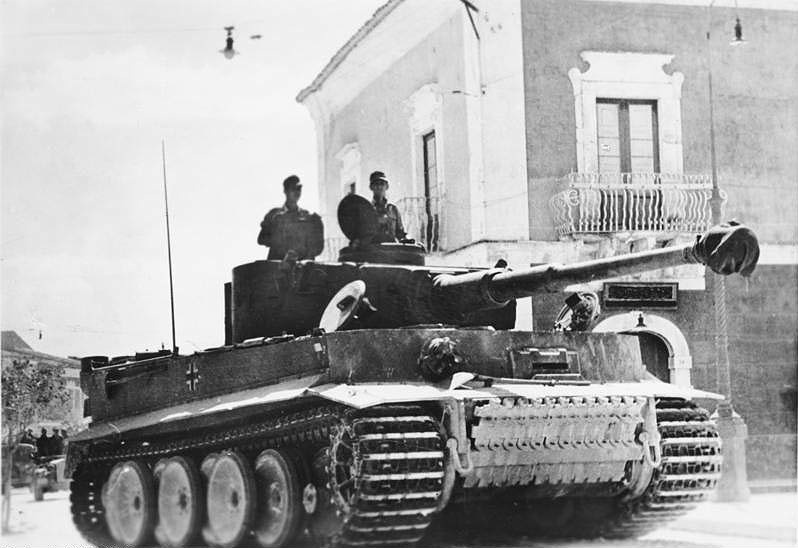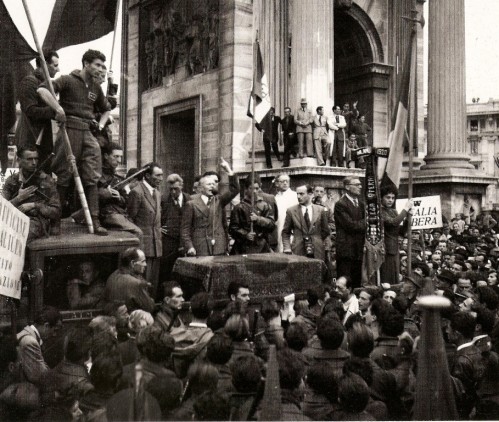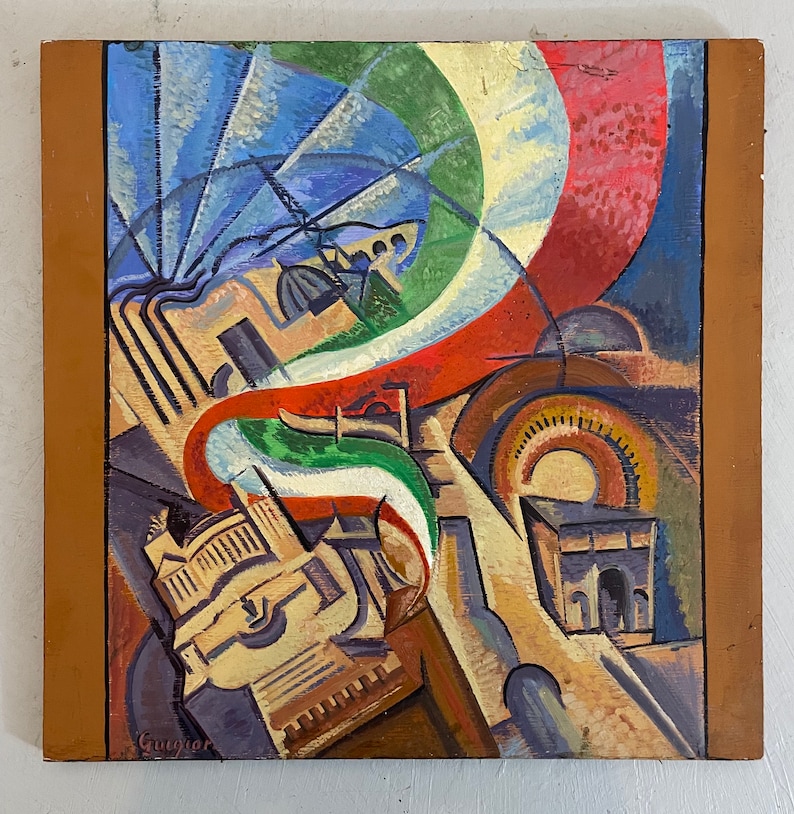Autarchia
On the 25th of June, with fires still burning in Genoa, Ambrosio and Mussolini received a visiting Japanese delegation. Mussolini had long held up the alliance with Japan with great optimism, their string of conquests and tenacity in defence of them being a great source of confidence for him even though their entry into the war had also forced Italy into war against the United States. However his guests provided little comfort on this occasion, stating candidly that Japanese raids into the Indian ocean would not be an option in 1943 nor would they be able to provide any of the strategic raw materials the Italians requested.
Moreover the Japanese were blunt about the Italian strategic situation, arguing that Italy must move to a total war economy and contribute more to the overall Axis war effort. Mussolini reassured the delegation that steps were already being taken to fully mobilise Italian strength to deal a decisive blow against the enemy.
The Anglo-Americans may have been successful in Africa but they had now trapped themselves strategically, being forced into attempting a landing in Europe. Surely, this would be a debacle as bloody as the American offensives in the Pacific? If the invasion came against Italian territory the Allied troops might land but the Regia Marina battle fleet would destroy their convoys before Italian troops emerged from the mountains to drive them back into the sea.
The United Kingdom showed signs of exhaustion and the people of the United States were losing faith in the war having been unprepared for the privations of rationing. A failed invasion of Europe would leave them at a strategic impasse and worsen morale even further, perhaps to the breaking point.
It’s hard to determine to what extent Mussolini believed this fantasy. To a certain extent he had to, as a victory against the Anglo-Americans was the only way he could hope to find a way out of the war which didn’t mean the end of his regime. The Japanese ambassador, Shinrokuro Hidaka, would state later that Mussolini at this time would often appear agitated and confused, slipping in and out of reality.
There was also perhaps a degree of projection in Mussolini’s claims about Allied morale, for the Italian people were long past exhaustion. In June meat was taken off of the ration with the remaining allotment providing less than a 1000 calories. Rations for industrial workers were slightly higher however they compensated little for the increased hours demanded by the attempts to replace the loss of armaments from the disasters of Stalingrad and Tunisia or Blackshirt efforts to root out Communists on the factory floor.
Street fights between factory workers and Blackshirts became a common sight in the streets of northern Italian cities and towns for the first time since the twenties. The pervasiveness of the black market and the criminal enterprises it emboldened added to a sense of looming chaos. Much of Italy’s urban population who had family in the countryside returned there for better food security and an escape from Allied bombing although the collapse of fertiliser production left farmers dreading a failed harvest. Famine beckoned.
For those workers still within northern cities the Allied attacks on the Italian rail network and its subsequent takeover for military traffic proved to be as effective as strikes in grinding production to a halt. Extended shifts were often spent sitting idle and hungry waiting for this or that to arrive and contemplating getting home without being jumped by Fascist paramilitaries.
Morale was also being raised as an issue within the National Fascist Party. The Party Secretary Carlo Scorza reported that roughly one in ten Italians were party members but warned that those numbers held “no absolute value if they do not represent spirit and will.” His predecessor in the role, Roberto Farinacci, lamented that the party was “absent and impotent.” Scorza attacked much of the party membership and leadership for being opportunists who had joined for personal gain with no belief in Fascism.
Scorza recommended revitalising the party by gutting its membership of these opportunists, leaving only the Old Fighters such as himself who had been present at the party’s inception and the young Blackshirts attempting to reassert the party’s authority in the streets. Mussolini gave tacit approval to these calls for a purge which in turn helped galvanise support for Grandi’s anti-Mussolini conspirators within the party.
The Communists were not so apprehensive about their membership. Since the initial success of the March strikes had ended in a bloody suppression the PCI had grown in strength and influence, particularly within the plants and dockyards which had participated in the March action. The demand then had been focused on a bonus for workers, next time it would be for the end of the war, the end of Fascism, and the end of hunger; Peace, Freedom and Bread.
By June the PCI had accumulated a stockpile of ammunition, small arms and explosives with a few hundred fighters who had some form of experience or training; however their real strength was invested in urban workers as a whole. The Easter Sunday action had failed because too many sympathetic to their causes had been fearful of Fascist retaliation and they had been vindicated by the subsequent massacres. If the Communists could cut off the Fascist head however the workers of northern Italy would come out in support. Preparations continued in anticipation for the instigating event, expected to be the coming collapse of food distribution.
Ambrosio at the same time continued to look for a way out of the war which kept something of the existing Italian Kingdom intact, with or without Mussolini. The fall of Pantelleria had left him shaken and although Mussolini had declared that if the Allied invaders wanted to occupy Italian soil they would have to do so in a vertical position, his Chief of Staff knew that conditions on Sicily were little better for the Italian defenders than they had been for Pavesi’s men.
Like Pantelleria, Sicily had been under constant aerial attack and blockade since May. The Axis air forces on the island had lost more than half of their strength attempting to maintain control of its skies and most of the remainder were forced to evacuate. Only a quarter for the necessary supplies the island required were getting through causing civilians to wander the countryside for miles in search of food despite fears of being strafed by roaming Spitfires. As the weeks went by much of civilian life carried on underground in crowded shelters; after the fall of Pantelleria the air raid sirens rang day and night.
General Alfredo Guzzoni arrived in Sicily at the start of June to take over command of armed forces on the island. Though he had never visited the island before he was quick to ascertain the dreadful state of morale, including amongst his own troops. Although Guzzoni insisted he was not above shooting soldiers who refused to fight, he complained of chronic shortages of ammunition, fuel and modern weaponry.
The patchwork organisation of Army, Navy, Fascist militia and Germans which made up the defenders of the island had been organised into a central Sicilian Armed Forces Command however most of the 200,000 Italian defenders consisted of coastal units; poorly trained older men and young boys drafted to defend their homes. Guzzoni’s plan of defence relied upon these units sacrificing themselves to hold off the Allied invasion long enough for his two motorised divisions to arrive and drive them back into the sea. The armour they were to do this with consisted entirely of obsolete French tanks.
Guzzoni estimated he could repel one Allied landing but would not be able to stop a second. Ambrosio attempted to bolster the defence of Sicily by concentrating the German forces already within Italy there. He went as far as to consider requesting as many German divisions as possible for the defence of the Italian mainland, undermining his bid for strategic independence, but was persuaded against this by the determination of the Regia Marina to make battle against any Allied landing and by the warnings of Giuseppe Castellano who pointed out that if Italy were to detach itself from the war it would be best that there were as few Germans as possible to kick out.
The Army conspiracy continued to lay the groundwork for removing Mussolini, with the reliably anti-German General Giacomo Carboni being placed in control of Italian forces around Rome. If the order came Carboni could take control of the capital and deter any Fascist or German response. Ambrosio dithered, wary of going against the King he had sworn to obey, who in turn remained confident that Mussolini was still the best man to clean up his own mess.
Ambrosio muddled on, working to manifest Mussolini’s fantasies whilst preparing for them to collide with reality. Like all of his opponents, systemic or otherwise, he prepared not only for the end of Mussolini but how Berlin would react.
Unlike the Japanese, Germany was an ally who was all too happy to lend a hand.
